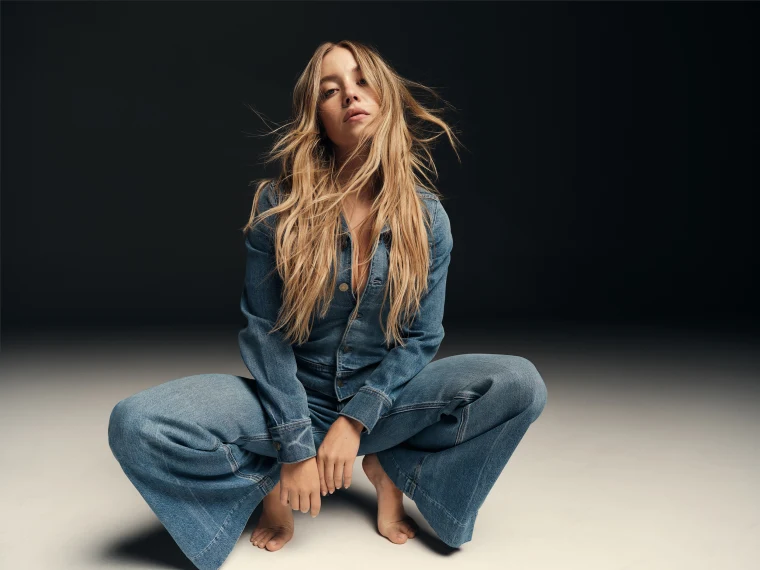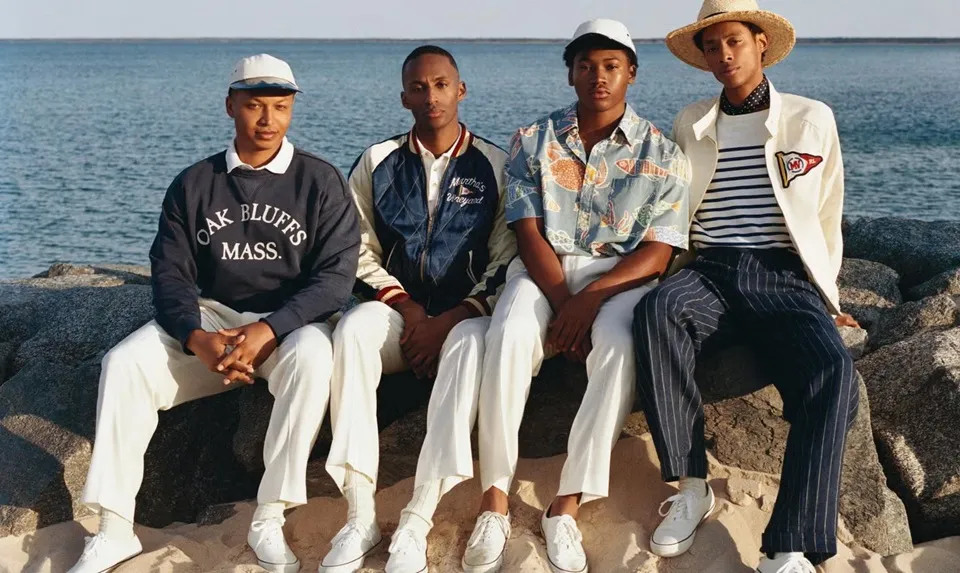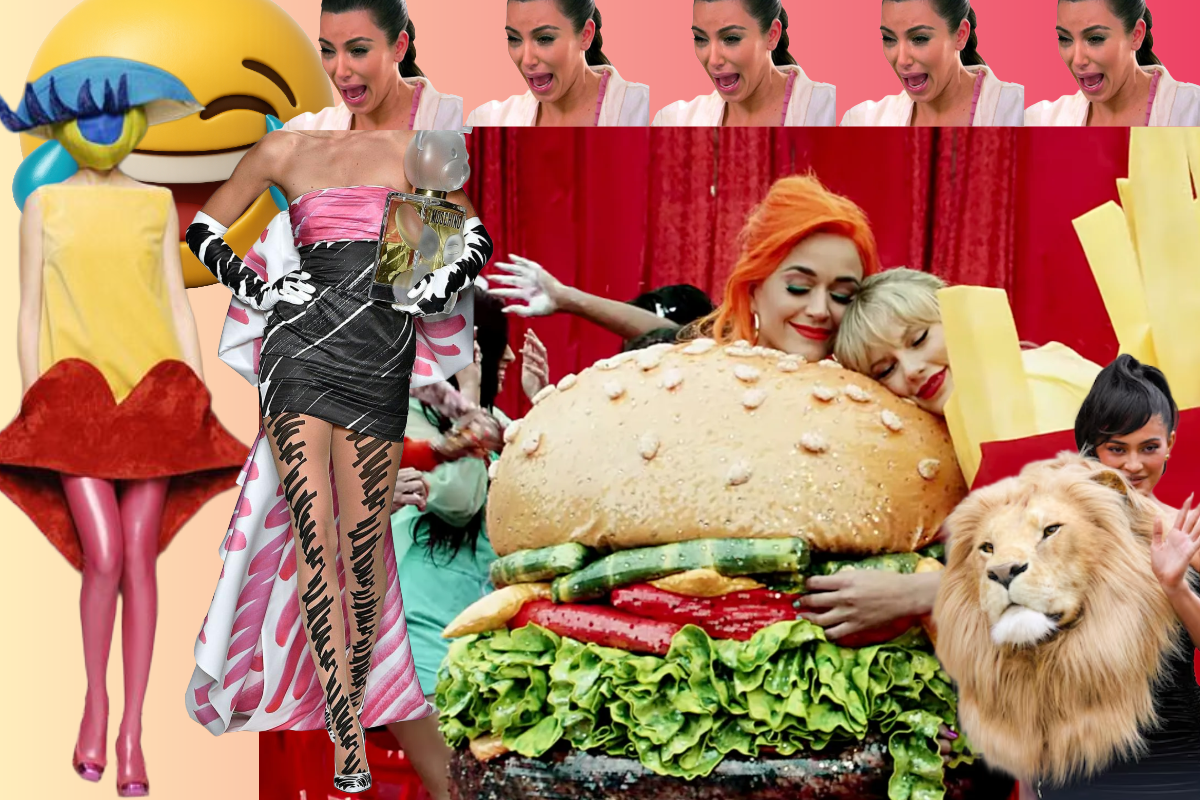An essential premise of fashion history is that the clothes of a time period will give you information about the social, economic, and political context a community was facing. In times of war, skirts were fitted with limited fullness because fabric resources were prioritized for soldiers.
In the aftermath of the French Revolution, the so-called “Male Resignation” involved men letting go of wigs, vibrant colors, and heavily decorated clothes. This fashion phenomenon was triggered by the desire to stop using fashion references from French aristocracy and royalty. The French Revolution took down the King and Queen and moved forward with a new sense of style.
It is 2025, and fashion is inevitably different from the clothes we saw five years ago, or even two years ago.
But unlike the times of war or the early years of the 19th century, there are several stories being told at the same time. These stories represent the way we interpret the social, economic, and political context. These stories may be completely different from one another, yet they still represent the same context.
Let’s look at two recent American fashion proposals and the Political Fashion behind them.
American Eagle and Sydney Sweeney

The viral campaign that reads “Sydney Sweeney has great jeans” has been the subject of several headlines even outside of the fashion world. There is an intentional wordplay referencing “great genes”, which sparked a lot of debate. It’s not that people lost the ability to laugh at wordplays. It’s just that we cannot see this wordplay without looking at the social context we are looking at.
Social media users quickly assured that the ad was referencing eugenics. Others were quick to deny that this was the case. What is the meaning of this word that was continuously referred to in the digital debates? Let’s look at the definition from the Oxford dictionary.
Eugenics: “the study of how to arrange reproduction within a human population to increase the occurrence of heritable characteristics regarded as desirable. Developed largely by Sir Francis Galton as a method of improving the human race, eugenics was increasingly discredited as unscientific and racially biased during the 20th century, especially after the adoption of its doctrines by the Nazis to justify their treatment of Jews, disabled people, and other minority groups.”
“Genes are passed from parents to offspring, often determining traits like hair color, personality, and even eye color. My genes are blue.” Sidney Sweeney says in her ad.
An innocent wordplay or an explicit reference to eugenics?
A few things to keep in mind.
Ahead of the 2026 midterm elections, the President, the Texas Governor, and GOP Texas State Legislators are pushing a plan to redraw district lines that would suppress the representation of communities of color across San Antonio, Houston, Dallas, and Austin.
The suppression of a demographic aligns well with the messaging that the American Eagle advertisement is pushing. Furthermore, members of this party and the President himself have reacted positively to both Sidney Sweeney and the advertisement. Not necessarily because they would go to the nearest mall to get a pair of blue jeans for themselves, but perhaps because the political fashion message woven into these jeans aligns with the plans they are trying to move forward.
Ralph Lauren and Oak Bluffs

A very interesting angle to highlight is the one taken by Ralph Lauren. Ralph Lauren’s heritage is as American as it gets, with a record of dressing the last five First Ladies regardless of political parties, the American brand has represented US fashion everywhere from Presidential Inaugurations to Olympic Games, Vogue Covers and movies.
The latest Ralph Lauren collection featured the historically Black community of Oak Bluffs in Martha’s Vineyard, Massachusetts. Ralph Lauren is not telling just one version of what Americana is. It is not jumping into a far-right wave that brings back restrictive standards of beauty and leaves behind many American stories to be told. Ralph Lauren understands the responsibility that represents telling these stories at a time when diversity, equity and inclusion have been restricted.
“For nearly 60 years, Ralph Lauren has aimed to capture the essence of American life and style with stories of family, heritage, joy and optimism.” Ralph Lauren’s site reads. “This summer, working with Morehouse and Spelman colleges for the second time, we traveled off-campus to Oak Bluffs, Massachusetts, a coastal town nestled in a cover of Martha’s vineyard.”
Oak Bluffs has been a haven for Black communities, including alumni of historically Black colleges and universities (HBCUs) like Morehouse and Spelman, for more than a century. When clothes are designed around a community like Oak Bluffs, it is the scenery, the landscapes, but also the people, the heritage, and their stories, that play a critical role in the direction the designs will take.
There are several reasons why this is a successful campaign with a clear message. There is a partnership with Cottagers, Inc. —a collective of Black female homeowners who are preserving Oak Bluffs’ legacy. Additionally, the rollout of the documentary A Portrait of the American Dream: Oak Bluffs, fully conveys the messages intended with Ralph Lauren’s vision of capturing America's essence with stories of family, heritage, joy and optimism.
Fashion continues to evolve into multiple aesthetics that represent the times we live in and the events we are facing. At the same time, the political messaging woven into our clothes is sometimes very explicit and undeniable. We often say that the clothes someone wears says a lot about the people wearing them. This is also true when it comes to the messages that the clothes are sending.
What are the values of those individuals celebrating Sydney Sweeney’s blue jeans ad? Do you think they like the ad because Sydney Sweeney has blue jeans and the digital world is overreacting? What is it about this A-list celebrity that is sparking so many different reactions across the digital space? Why do you think the president calls this ad “fantastic”?
Distinctively, what are the values of those applauding Ralph Lauren’s Oak Bluffs collection? As this is a continuation from a 2022 approach, how do we think their messaging changed over the last three years and where do we think it will go moving forward? Is this collection a fair representation of America’s stories?
Nothing is ever meaningless. Behind the seams, the jeans and the sweaters, fashion is telling us a story. Let the context around us illustrate the bigger picture so that we can better understand the political fashion stories we are being told.






.png)